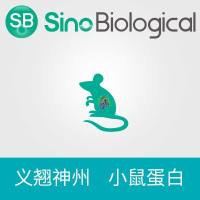Analysis of Protein Prenylation and S-Acylation Using Gas ChromatographyCoupled Mass Spectrometry
互联网
互联网
相关产品推荐

Recombinant-Hordeum-vulgare-High-molecular-mass-early-light-inducible-protein-HV58-chloroplasticHigh molecular mass early light-inducible protein HV58, chloroplastic; ELIP
¥10556

Coronavirus Nucleocapsid重组蛋白|Recombinant SARS-CoV-2 Nucleocapsid-AVI&His recombinant Protein,Biotinylated
¥4520

Cell Cycle Analysis Kit (with RNase)(BA00205)-50T/100T
¥300

pagP/pagP蛋白Recombinant Escherichia coli O6:K15:H31 Lipid A palmitoyltransferase PagP (pagP)重组蛋白Lipid A acylation protein蛋白
¥1836

GAS6重组蛋白|Recombinant Mouse GAS6 Protein (His Tag)
¥2310
相关问答

